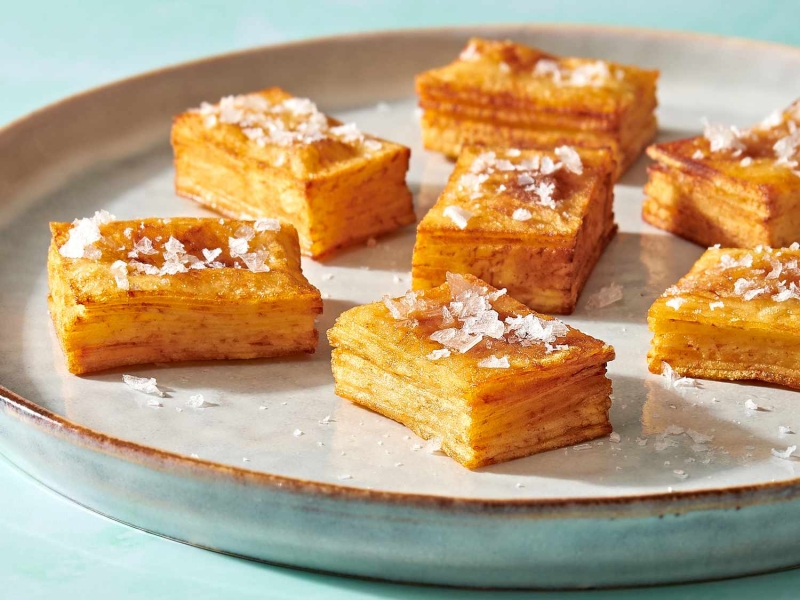Ok maybe it’s technically not a million layers, but who’s counting?
Prep: 15 mins
Cook: 10 mins
Total: 25 mins
Servings: 2 to 4 servings
Yield: 8 potato stacks
If you keep an eye on food trends at all, you’ve been inundated with the white-hot phenomenon called Million Layer Potatoes. An easier spin of the 15-hour potatoes that chef Thomas Keller made famous (and which he called potato pavé), they are, in essence, multilayered potatoes that are fried in bite-size stacks, delivering crispy on the outside, creamy on the inside carbohydrate joy.
How Do You Make Million Layer Potatoes?
I’m a fan of the faster million layer version of this decadent potato dish because I simply can’t (or won’t) wait 15 hours for fried spuds. In the traditional million layer potato method, you slice potatoes very thinly on a mandoline (1/16 of an inch, about the thickness of a dime), stack the slices, cut the stack into bite-size rectangles, and deep fry them.
Deep frying is generally a hard no for me. It’s messy, it makes the house smell, and then there’s the angst of what to do with all that leftover fry oil. So I came up with a solution: shallow-fry the potato stacks instead. With just one cup of oil (instead of four to six cups), I can pan fry the stacks to crispy perfection.
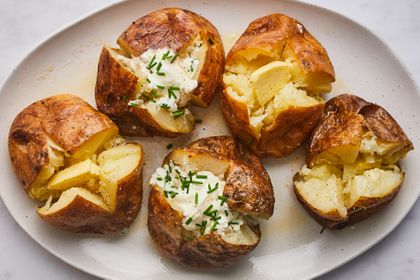
Pan Frying Tips for Million Layer Success
- Don’t stack them too high—Stack the potato slices up to one inch thick; any thicker and the potatoes won’t cook evenly throughout. For an average russet potato, this will be about 8 to 10 slices. Put the off cuts in a bowl of cold water with a paper towel on the top of the water (to prevent browning) and store in the fridge for another use (breakfast spuds, soup, mashed potatoes, roasted potatoes, etc.).
- Use a 12-inch skillet—Pan fry in a nine to 12-inch pan so that one cup of oil comes about halfway up each potato stack.
- Keep an eye on the oil temperature—Start the oil over medium high heat at first, then reduce the heat to medium for the rest of the cooking process. This slows down the browning and gives the center of the stacks time to finish cooking to creamy perfection.
- Avoid crowding the pan—Don’t overcrowd while frying. You should be able to fit one to two potato’s worth of stacks in the oil at once.
- Close but not too close—Arrange the potato stacks close together but not touching each other in the pan. This pushes the bubbling oil in between the stacks and up the sides to brown the sides evenly.
- No touchy—Once in the pan, let the stacks fry for four to five minutes without moving them to set the starches and glue the layers together. You can true up the edges if they move by using a thin spatula and the back of a fork to make the potatoes stack perfectly.
- Use the right tools—Use a spatula and a fork to gently flip the potatoes away from you to the second side to prevent splashing yourself with hot oil.
- Wait to season—Season the potatoes generously with salt after frying. Seasoning pre-fry draws out moisture and can cause spattering in the pan and inhibit browning.
How To Serve Million Layer Potatoes
These potato bites are great on their own with the flaky salt, but they’re practically begging to be dipped in a flavorful sauce. Try whipping up a quick spicy mayo, use homemade or store-bought ranch dressing, or serve with a garlicky aioli.
«These turned out so well! I was worried the layers would fall apart, but that wasn’t a problem at all. They crisp up so nicely. The key is to keep the oil temperature moderate so they brown but don’t get too dark before the inside has a chance to cook through.» —Megan Scott
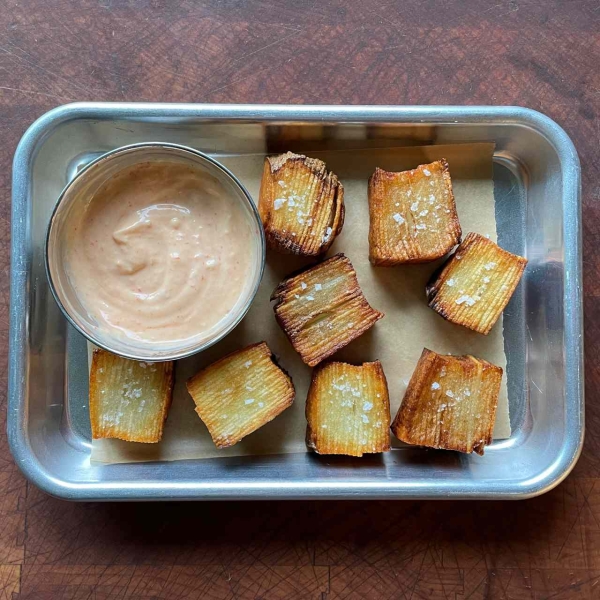
A Note From Our Recipe Tester
Ingredients
-
1 cup canola, safflower, avocado, or peanut oil
-
2 large (12-ounce) russet potatoes
-
Flaky salt, for seasoning
Steps to Make It
-
Gather the ingredients.
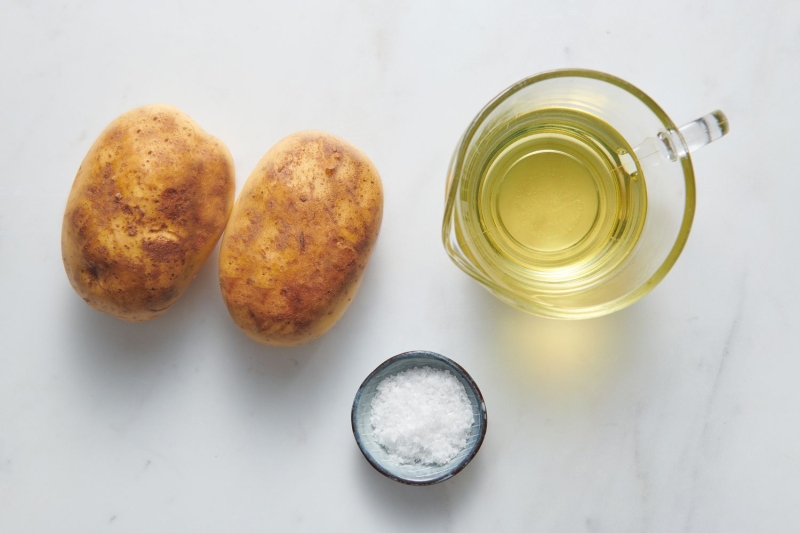
-
Pour 1 cup canola, safflower, avocado, or peanut oil into a 9 to 12-inch nonstick skillet. Heat over medium high heat until the oil is shimmering and a bit of potato sizzles immediately when added to the pan.
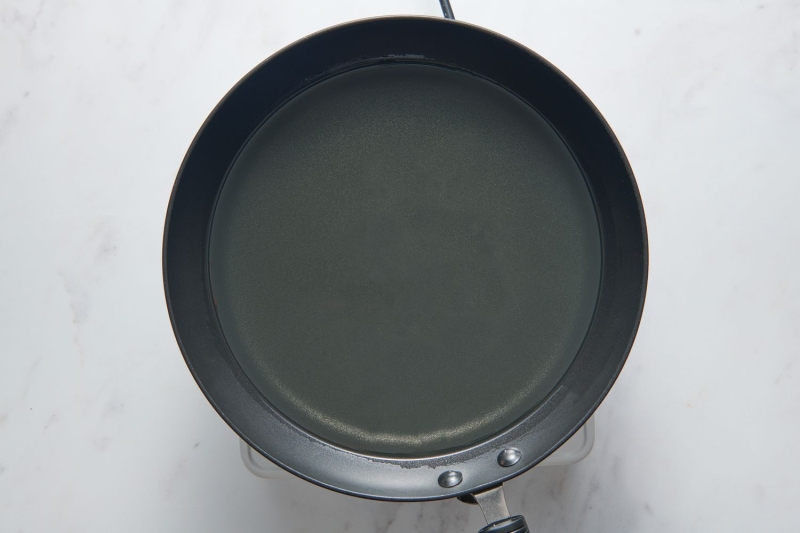
-
While the oil is heating up, scrub 2 large (12-ounce) russet potatoes under cold running water and pat dry. Place a potato on a mandoline and slice lengthwise into 1/16-inch-thick slices (the thickness of a dime) using the guard to keep your fingers intact, until all the potato is sliced. Discard the top and bottom most pieces with skin on them or save them for another use.
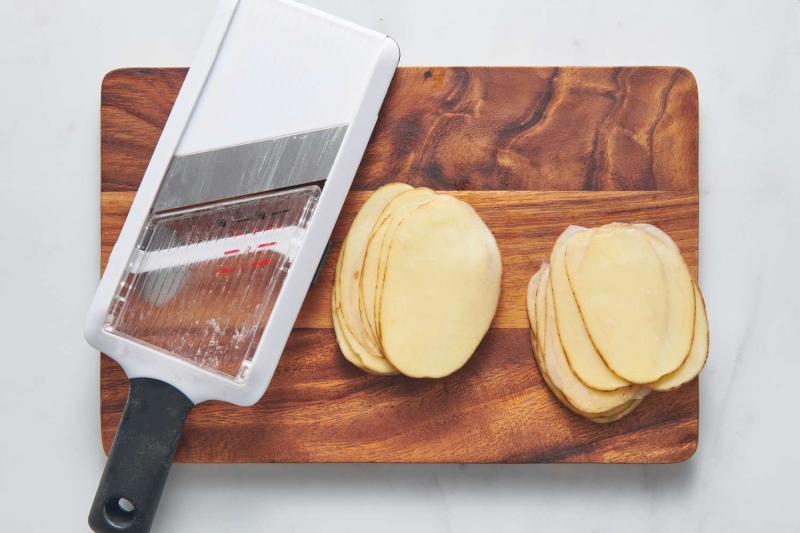
-
Stack the potato slices in the order they were sliced to recreate the potato shape. Cut off the long and short edges to create a perfect rectangle of skinless potato slices. Reserve the off cuts in a bowl of cold water for another use.
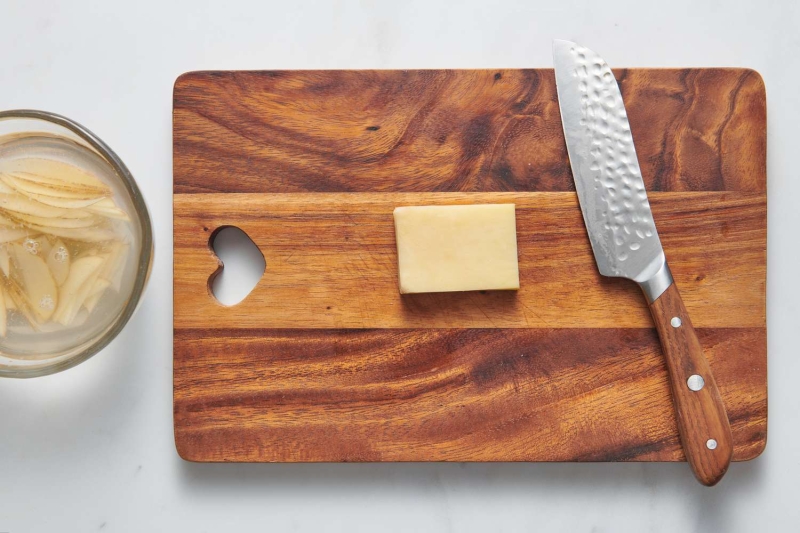
-
Cut the rectangular stack crosswise into 3 to 4 bite-size rectangles. Repeat the slicing, stacking, and cutting steps for the second potato.
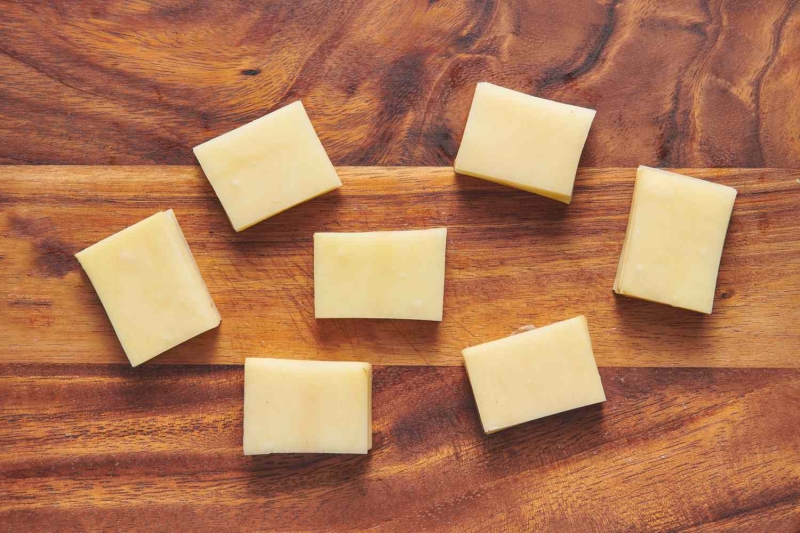
-
Carefully add the potato stacks to the oil on their sides and line them up so their long edges are close together but not touching. Reduce heat to medium and cook, truing up the edges with a fork and spatula if needed, until the bottom and halfway up the sides of the potato stacks are deep golden brown, 4 to 5 minutes. Use a splatter screen if you have one to prevent oil splatters.
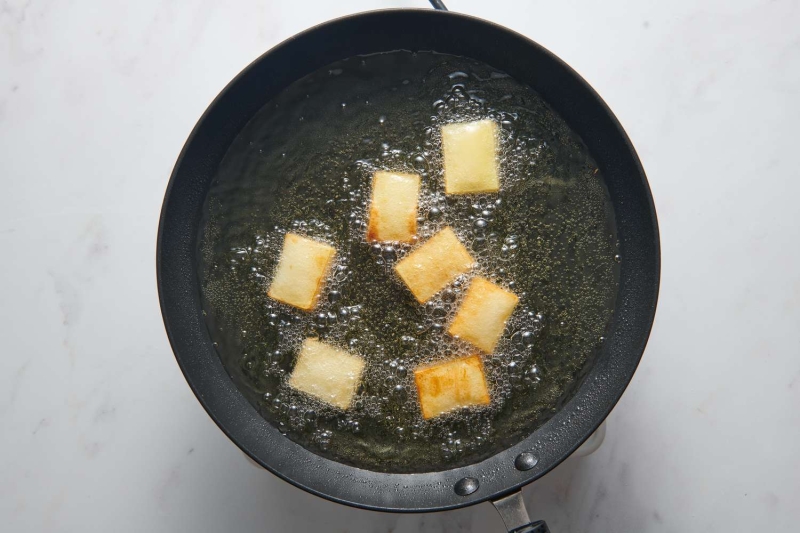
-
Carefully flip the stacks away from you and cook on the second side until the stacks are deep golden brown all over, 4 to 5 minutes more.

-
Transfer to a paper towel-lined plate and season generously with flaky salt or other seasonings. Serve immediately.
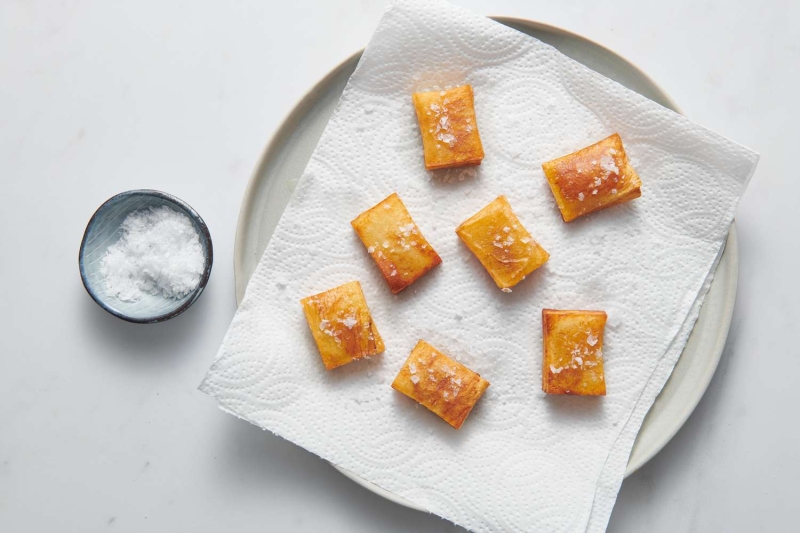
How To Store
The potato stacks are best served immediately. Don't worry: you won't have any trouble eating them all right away.
Feeling Adventurous? Try This:
Choose your own adventure with seasonings:
- A sprinkle of smoked paprika
- Freshly ground black pepper
- Finely grated parmesan cheese
- Chopped fresh chives
- Sour cream and caviar
| Nutrition Facts | |
|---|---|
| Servings: 2 to 4 | |
| Amount per serving | |
| Calories | 257 |
| % Daily Value* | |
| Total Fat 14g | 18% |
| Saturated Fat 2g | 12% |
| Cholesterol 0mg | 0% |
| Sodium 165mg | 7% |
| Total Carbohydrate 30g | 11% |
| Dietary Fiber 3g | 12% |
| Total Sugars 2g | |
| Protein 4g | |
| Vitamin C 12mg | 59% |
| Calcium 26mg | 2% |
| Iron 2mg | 8% |
| Potassium 780mg | 17% |
| *The % Daily Value (DV) tells you how much a nutrient in a food serving contributes to a daily diet. 2,000 calories a day is used for general nutrition advice. | |
